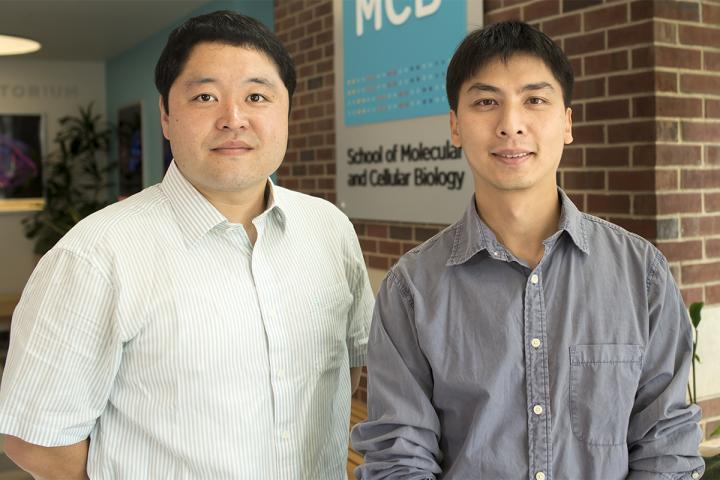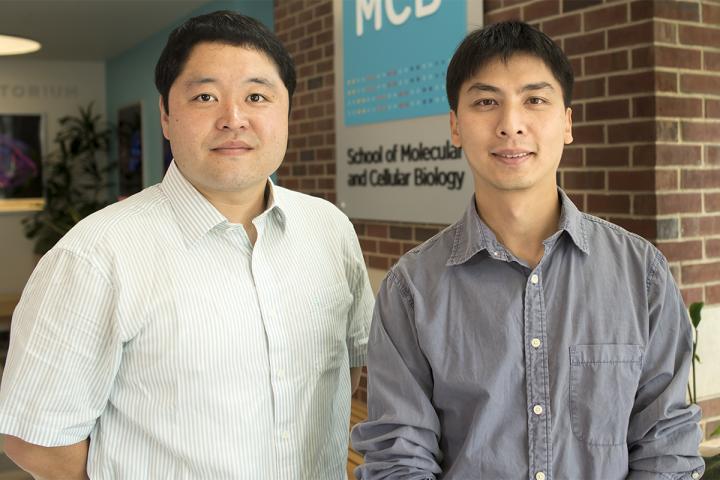
Credit: Photo by Steph Adams
CHAMPAIGN, Ill. — In a new study in mice, researchers have identified a key protein involved in the irregular brain cell activity seen in autism spectrum disorders and epilepsy. The protein, p53, is well-known in cancer biology as a tumor suppressor.
The findings, reported in the journal Human Molecular Genetics, will open new avenues for understanding the factors that contribute to these developmental disabilities, said Nien-Pei Tsai, a University of Illinois professor of molecular and integrative physiology who led the new research.
"Under physiologically normal circumstances, neurons are able to readjust their excitability: the strength at which neurons are firing," Tsai said. "But in autism spectrum disorders, such as Fragile X syndrome, and in epilepsy, you see higher levels of excitability. Our brains need a baseline for neurons to return to after higher or lower neuron excitability. If the neurons can't return to a normal range, then the baseline is reset outside of a normal range."
This affects both behavioral characteristics and cognitive functioning, he said.
Using a mouse model of Fragile X syndrome, the most common inherited autism disorder, the researchers discovered a molecular mechanism involved in the inability to regulate excitability. The protein p53 is present in higher-than-normal levels in irregularly excitable neurons.
In an earlier study, Tsai found that p53 in neurons breaks down when normal neurons are at a higher excitable state. Previously, the protein was best known for its role in cancer suppression.
"Many patients with cancer have lower levels of p53 or mutated p53, and we know that this protein is important for cell division," Tsai said. "But the protein also is present in neurons, which do not divide, so we were interested in understanding the role the protein plays when it is not involved in cell division."
In the new study, researchers found that p53, which doesn't break down normally in Fragile X neurons, triggered a cascade of reactions that interfered with the normal signal to return to a calmer state, Tsai said.
"We don't yet know all the parts of this cascade, but we did find that p53 interferes with another important protein, Nedd4-2, that is associated with epilepsy," he said.
The researchers tested the cellular effect of reducing the protein by knocking down the p53 gene in their mouse model. They also inhibited the protein in neurons grown in cell culture with a drug used in cancer research to see the effect in communications between groups of neurons and one-to-one synaptic connections.
"We found that in both cases – removal of the p53 protein and inhibition of the protein – the connections between synapses and groups of neurons were able to return to a normal, stable state," Tsai said. "These findings show a previously unknown, and very strong, role that p53 is playing in irregular brain cell function."
###
The National Institutes of Health, the Brain and Behavioral Research Foundation and the Simons Foundation supported this research
Editor's notes:
To reach Nien-Pei Tsai, call 217-244-5620; email [email protected].
The papers "Loss of fragile X protein FMRP impairs homeostatic synaptic downscaling through tumor suppressor p53 and ubiquitin E3 ligase Nedd4-2" and "Dysregulation and restoration of homeostatic network plasticity in fragile X syndrome mice" are available online and from the U. of I. News Bureau.
DOI: 10.1093/hmg/ddy189
DOI: 10.1016/j.neuropharm.2018.06.011
Media Contact
Steph Adams, Science Writer, Univ. of Illinois News Bureau
[email protected]
217-333-5802
@NewsAtIllinois
http://www.illinois.edu
Related Journal Article
http://dx.doi.org/10.1093/hmg/ddy189





